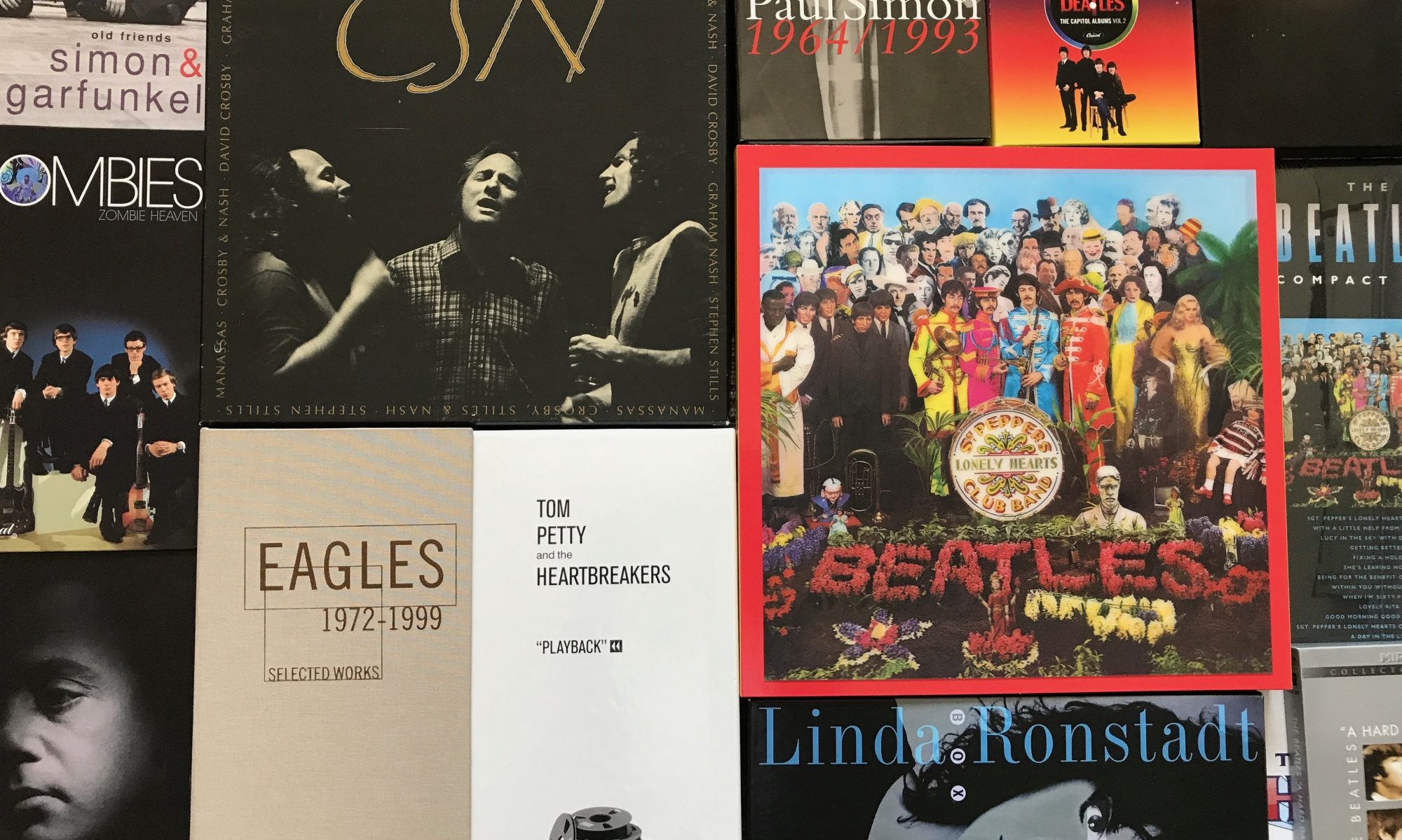It’s been 40 years since the world was introduced to the New Wave sound of The Cars. Or were they Rock? Pop? Or maybe even Punk? The cars had their own sound that mixed elements of all of them.
 Elliot Easton (lead guitar), Ric Ocasek (guitar & vocals), Greg Hawkes (keyboards), Benjamin Orr (bass & vocals), David Robinson (drums).
Elliot Easton (lead guitar), Ric Ocasek (guitar & vocals), Greg Hawkes (keyboards), Benjamin Orr (bass & vocals), David Robinson (drums).
This Boston band’s first album, The Cars, came out in June of 1978, and had three singles that charted…”Just What I Needed” (#27), “My Best Friend’s Girl” (#35), and “Good Times Roll” (#41). It also had a much-played album cut “Moving in Stereo”. Despite the modest rankings of the singles, the album grew in popularity. By the end of 1978 it had gone platinum, it was the #4 ranked album for 1979, and went on to eventually sell over 6-million copies. Rock radio liked the cars. When I was programming a Rock station in the late ’80’s, I remember a list of the most-played classic songs on Rock stations, and at the very top of the list was “Good Times Roll”.
Ric Ocasek wrote almost all of their songs, and he had his own distinctively quirky style of singing. Benjamin Orr also sang some of the leads. He had a little smoother style, so he often did the ballads. Keyboardist Greg Hawkes used synthesizers extensively, guitarist Elliot Easton experimented with guitar effects, and David Robinson often used drum programming. All of that gave The Cars a sound that was called New Wave in the late ’70’s and early ’80’s, but the group also featured strong melodies and harmonies that had a wide appeal to radio programmers and listeners alike.
The Cars second album, Candy-O, also went multi-platinum, and featured their biggest hit so far, “Let’s Go” (#14), with the lead vocal by Benjamin Orr. In 1980, their third album, Panorama, was a bit of a let down, even though it did go platinum. Some fans liked the change-up from the first two albums.
By the end of 1981, The Cars released album number 4, Shake It Up. The title song made it to #4, helped in part by that newfangled video thing, MTV, which had just started in August of that year. The Cars were back to multi-platinum, and their biggest album was next.
Heartbeat City was released in March of 1984. It had five hit singles…”You Might Think” (#7), “Magic” (#12), “Drive” (#3), “Hello Again” (#20), and “Why Can’t I Have You” (#33). A sixth song, “It’s Not The Night” was #31 on Billboard’s Mainstream Rock chart. The Cars spent a lot of time in the studio for Heartbeat City, and had enlisted the help of producer Mutt Lange.
 The video for “You Might Think” is one of the first computer graphic music videos, and won the first MTV Video Music Award for “Video of the Year” (in 1984).
The video for “You Might Think” is one of the first computer graphic music videos, and won the first MTV Video Music Award for “Video of the Year” (in 1984).
After that high point, The Cars only had three more Top-40 singles…”Tonight She Comes” (#7), “I’m Not The One” (#32), and “You Are The Girl” (#17). In 1987, they had their lowest-selling album Door To Door. The Cars broke up in 1988. There was a reunion album in 2011…Move Like This.
 Above is a photo of my double CD anthology by The Cars from 1995. It not only has a lot of great songs, it’s one of the coolest album packages ever. The brightly-colored cardboard sleeve looks like metal-flake car paint, with added fire & pin-striping, and of course the CD’s look like wheels.
Above is a photo of my double CD anthology by The Cars from 1995. It not only has a lot of great songs, it’s one of the coolest album packages ever. The brightly-colored cardboard sleeve looks like metal-flake car paint, with added fire & pin-striping, and of course the CD’s look like wheels.
The Cars had 15-years of eligibility before they were inducted into The Rock & Roll Hall of Fame (class of 2018). Cars fans were happy to see the group finally get the recognition. It’s a shame the honor couldn’t have come before Benjamin Orr passed away from cancer (at age 53 in 2000).
As always, there were some music fans who thought their own favorite bands should have been selected instead. The Cars came up with a very original musical style that was even hard to categorize, and high-quality songs with great appeal. The Cars induction was a good choice.
 Update: Ric Ocasek passed away on September 15th, 2019 at the age of 75. He was found in his New York apartment, unconscious in his bed. It was determined that the cause of death was heart disease.
Update: Ric Ocasek passed away on September 15th, 2019 at the age of 75. He was found in his New York apartment, unconscious in his bed. It was determined that the cause of death was heart disease.
Here’s the information released by Paulina Porizkova, who married Ric Ocasek In 1989 (although they announced their separation in 2018):
After The Cars broke up, Ocasek worked as a producer for many artists, including the band Weezer. It’s sad that time is taking so many of the artists who have given us so much great music.

























































































